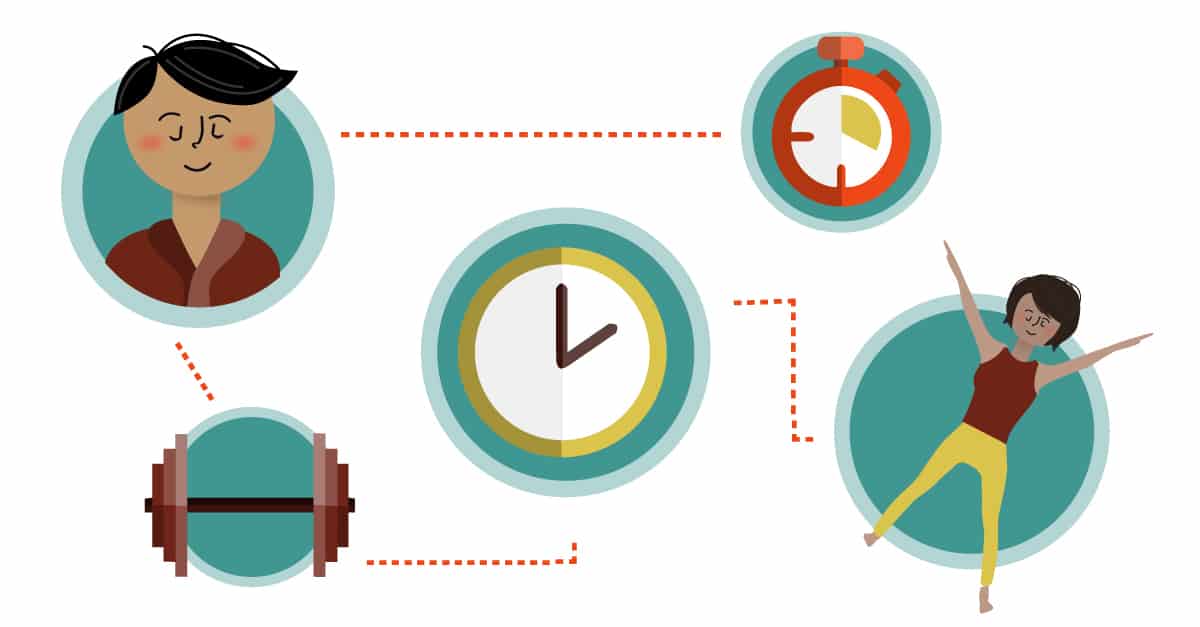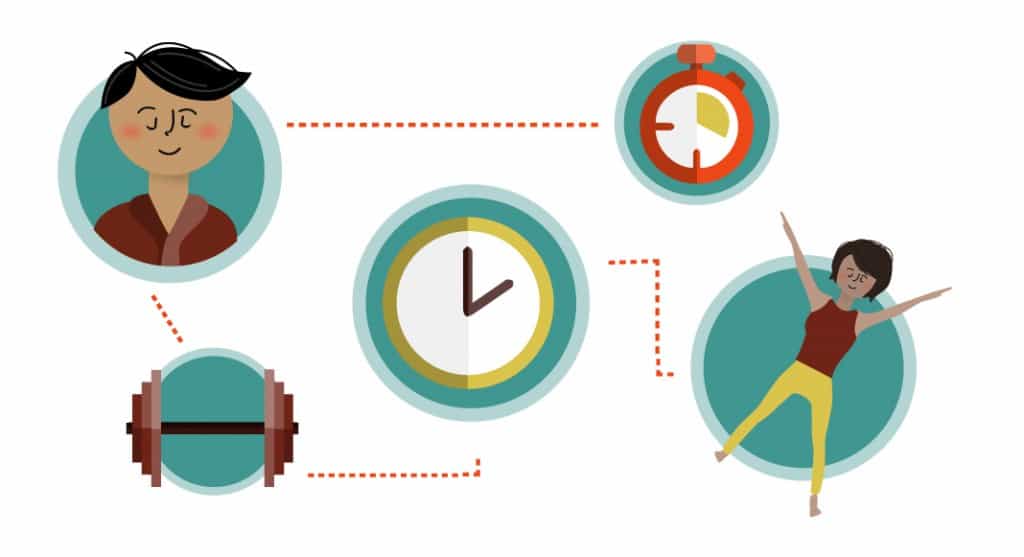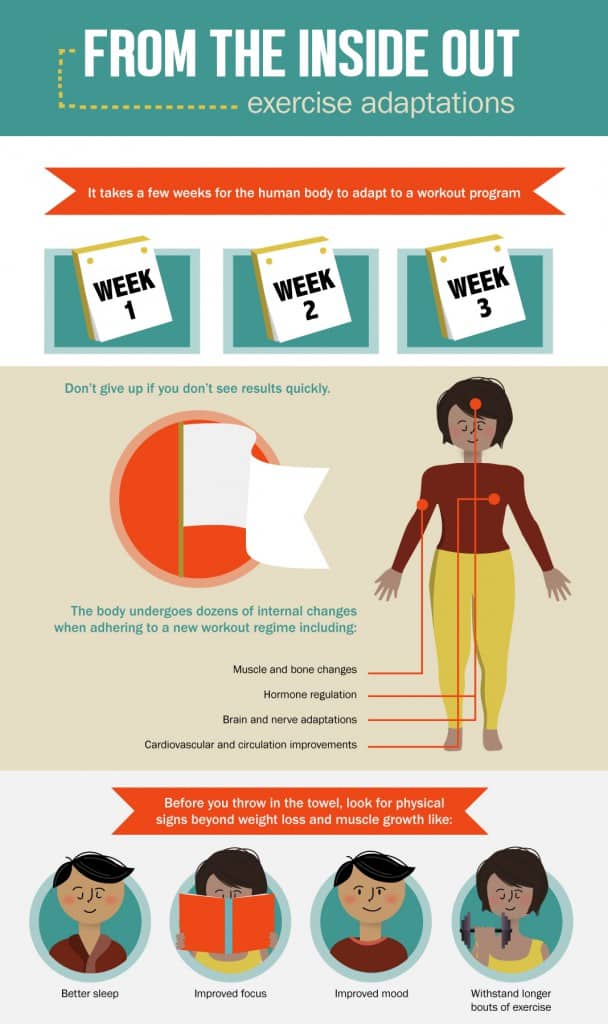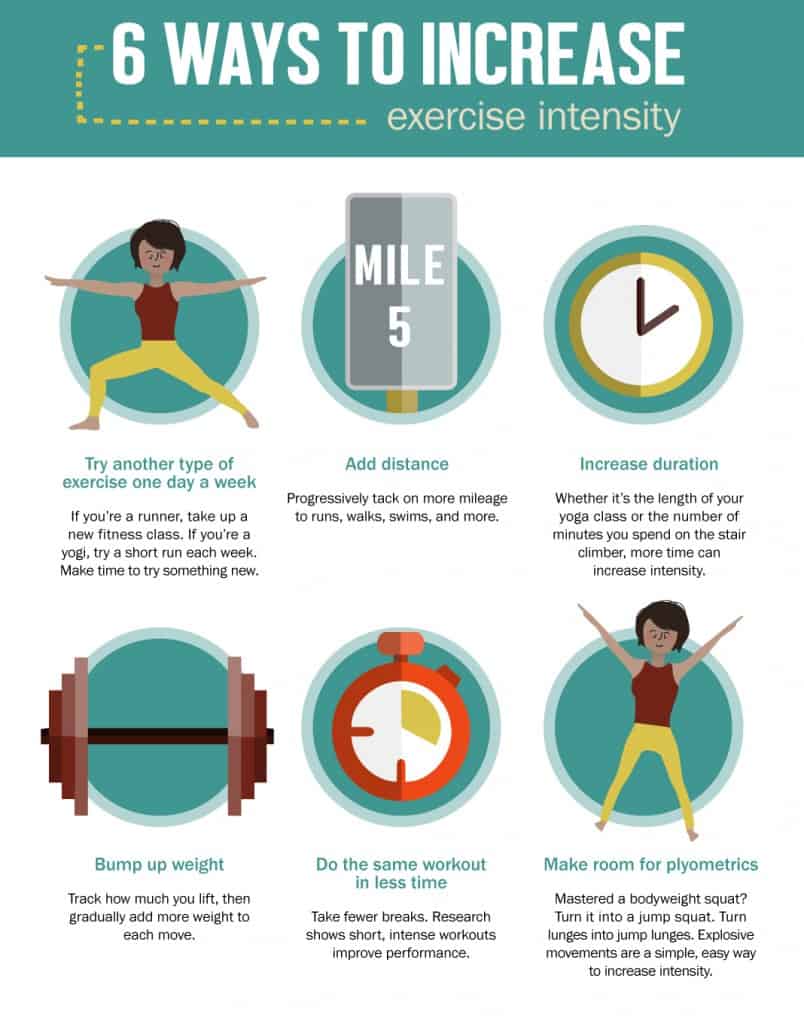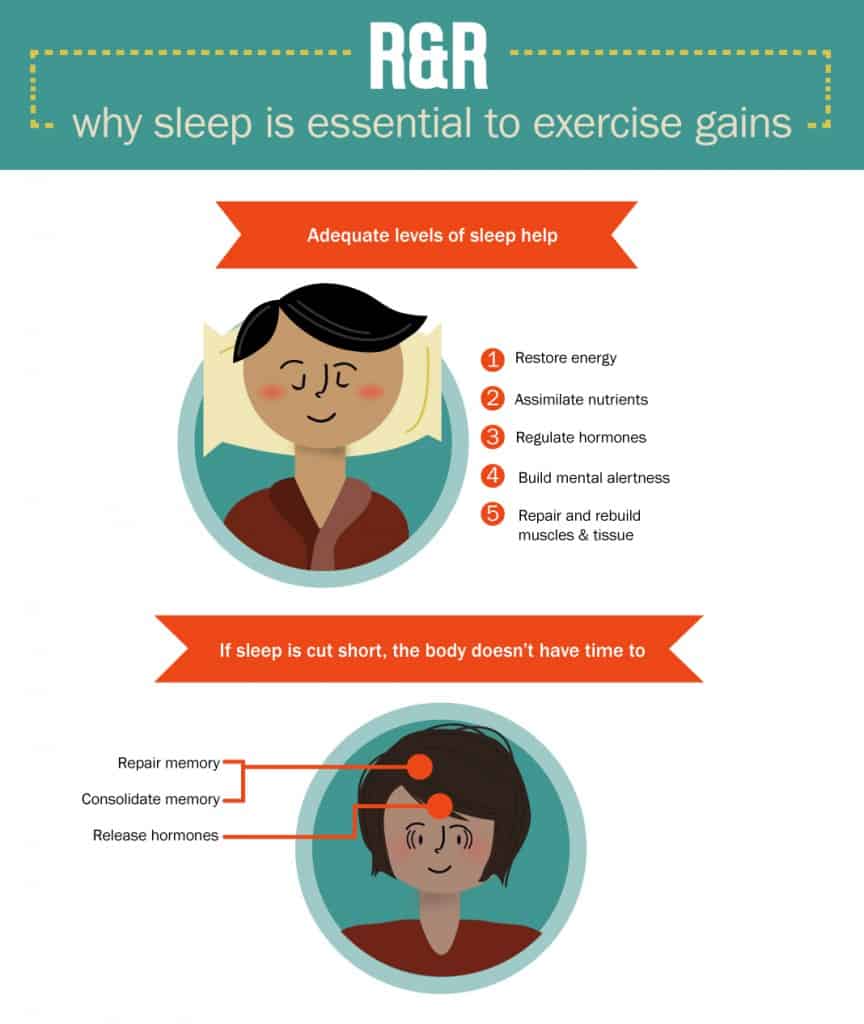 How Often Should You Switch Up Your Workout Routine?
How Often Should You Switch Up Your Workout Routine?
The great debate on how often to switch up a workout routine varies from program to program, but one sentiment always rings true: Listen to your body and do what gives you the best results.
Easier said than done, right? Somewhere between total muscle confusion and status quo is the right workout routine for you. Before you get too confused about muscle confusion, check out these tips and suggestions to change up your workout routine and keep your body guessing.
Pair Training with Your Goals
The best way to get better at something is to practice. Pretty simple, right? If you want to become a better runner, run more. To improve your squat, squat more—and so on. This isn’t to say you should only perform the exercise that complements your primary goal, but its best not to focus on too many things at once.
This is the case for health goals, as well. Maybe you want to lose fat, get stronger, build muscle, and improve endurance. Those are all great goals, but some compete with each other, which means one goal has to take second place in order to meet another. Setting too many exercise goals at one time can initiate the yo-yo effect and lead you to believe exercise isn’t effective, when the reality is that too many goals are getting in the way.
Narrow your focus and create a list of goals for the following three time chunks: immediate (the next three months), secondary (the next six to 12 months), and long-term (over the next two years or more). This list helps prioritize what you want to accomplish first, and helps you stay focused without trying to accomplish everything at once.
Understand Adaptations
Whether you sign up for a Couch to 5K or join a new fitness class, just getting started can be arduous. But as you continue, training likely gets easier. Maybe a one-mile run turns into an easy three miles, or a wall push-up turns into a full push-up from the floor.
Humans are built to adapt to new stressors. The initial stress experienced during new exercises represents the classic fight or flight response. You may feel unstable, short of breath, weak, and confused during a first Zumba class. But after several weeks of regular classes, the routines and steps become more familiar and you strengthen your heart lungs, muscles, and bones. Performing the same movements increases adaptability.
The duration, frequency, and intensity of training (along with a sprinkle of genetics) determine how quickly you adapt to new exercise. But adaptation doesn’t happen overnight. A four- to eight-week training program provides a good measure of whether or not your body is improving, so patience is key. If you are new to fitness, allot more time to your program as your body undergoes adaptation phases that include the musculoskeletal, cardiovascular, nervous, and endocrine systems. In other words, a lot happens inside that may not reflect the changes you want to see on the outside.
Most people give up on a fitness program because they can’t see results quickly. However, it’s important to consider all of the internal changes and adaptations that happen including to muscles and bones, hormone regulation, brain and nerves, and cardiovascular and circulation. Look for other physical signs outside visible ones such as better sleep, improved mood, greater focus at work, or the ability to withstand longer bouts of exercise.
Mix Things Up
Runners benefit from strength training and weightlifters benefit from cardiovascular exercise. This type of cross training works well across many fields of fitness, and isn’t limited to cardio and resistance training. Athletes and novices alike benefit from using multiple methods of exercise such as yoga, Pilates, and recreational sports, but the key to improving is to prioritize your training to fit your specific goals.
If your goal is to become a better runner, make that your fitness priority. Strength training, yoga, or other activities can be secondary. The best way to do this is to devote the most energy for your training day toward your runs, and taper back on other workouts until you reach your endurance goals. Runners can still lift weights during peak season, but they may cut back on volume and intensity to better focus on running.
Skilled football players make strength training a priority in the off-season, then switch to strength and speed in training camp. In season, they focus primarily on speed. This works well for the average gym-enthusiast as well. Create seasons for your own exercise routines (for example swimming in the summer, hiking in the spring, indoor classes in the winter) to keep things fresh and interesting, and to avoid plateaus.
Ramp Up the Intensity
Changing programs frequently isn’t the only way to stave off boredom while improving your fitness. In any fitness program, it’s important to increase intensity as you adapt. Intensity can be ramped up in aerobic classes, CrossFit training, weightlifting, running programs, and other forms of exercise.
Continue to challenge yourself by increasing the distance of your runs, the duration of your fitness classes, the frequency in which you train, the amount of weight you lift, or other aspects of your training. Running two miles a day eventually gets easier. Staying on the same path may keep you in relatively good shape, but chances are you won’t improve your overall fitness and health with the same daily run at the same pace. Challenge yourself to run farther or faster.
The same principle holds true for other forms of exercise. This principle is called progressive overload—a method of increasing intensity by adding weight, reducing rest time, or increasing volume or intensity. In order to build stronger, bigger muscles and bones, which improve heart and lung capacity, circulation, and nerve response, you must force your body to respond beyond its capability.
Know the Right Time for Change
Beginning exercisers should allow more than six weeks to adapt to a fitness program before changing their routines. Changes can be small—gradually increase time, distance, weight, or speed. Adding new exercises or an extra exercise day is also another great way to make incremental changes to a workout plan.
A completely new program may be in order after you’ve mastered all of these other improvements. This can typically happen after six to eight weeks for a beginner. Experienced and advanced exercisers need to change things up once the body begins to adapt itself to a certain method of training. Noticeable strength or endurance plateaus—when you do not make improvements despite consistent effort—are a good indicator that change is in order. For experienced trainees, this can be anywhere between four to eight weeks.
Take Time to Recover
Recovery is an important and often overlooked aspect of fitness. Training week after week takes a toll on the body, so rest is essential to improve fitness and avoid exhaustion.
Every four to eight weeks, take a week to deload (reduce the volume and intensity of your training) or reduce the amount of training you perform. It’s a good idea to deload before you change programs so your body has time to prepare for the new work it is about to perform.
Another important aspect of recovery is rest and sleep. Rest is the time you have between bouts of exercise. There is no magic number, but at least one day of total rest each week can help improve performance. If your body is constantly tired or you feel fatigued for a prolonged period of time, you may need more rest.
Adequate rest allows the body to restore energy, assimilate nutrients, and regulate hormones. Seven hours of sleep per night is ideal (though eight to nine hours may be better) for recovery and growth.
Pay Attention
With any change to a fitness program (intensity, duration, type), it’s important to pay attention to your body both physically and mentally. Pain, fatigue, excess soreness, and exhaustion are signs your program may not be right for you. Boredom or lack of response from your body after time is another indicator you’re ready to switch things up. A little tinkering may make a world of difference, or you may choose to try something completely different. Avoid constant exercise hopping and give a program at least four weeks before switching, unless injury occurs or the routine isn’t sustainable.
